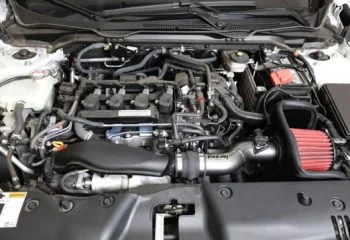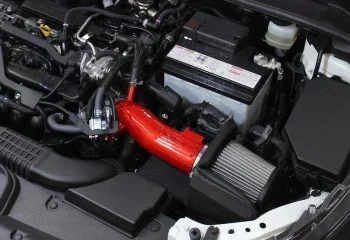Oil lubricates and protects engine components, reducing wear and tear and maintaining cleanliness. It also dissipates heat, preventing engine overheating in hot weather or at high speeds.
Dirty or old oil can cause deposits, leading to reduced performance. When the oil light on the dashboard comes on, it’s time for an oil change. Checking the oil level with the dipstick is important for smooth car operation.
Additionally, the color of the oil on the dipstick can indicate the car’s health. In this blog post, we’ll provide a guide on what to look for to ensure optimal car performance.
What's in this post?
What color should oil be on dipstick?
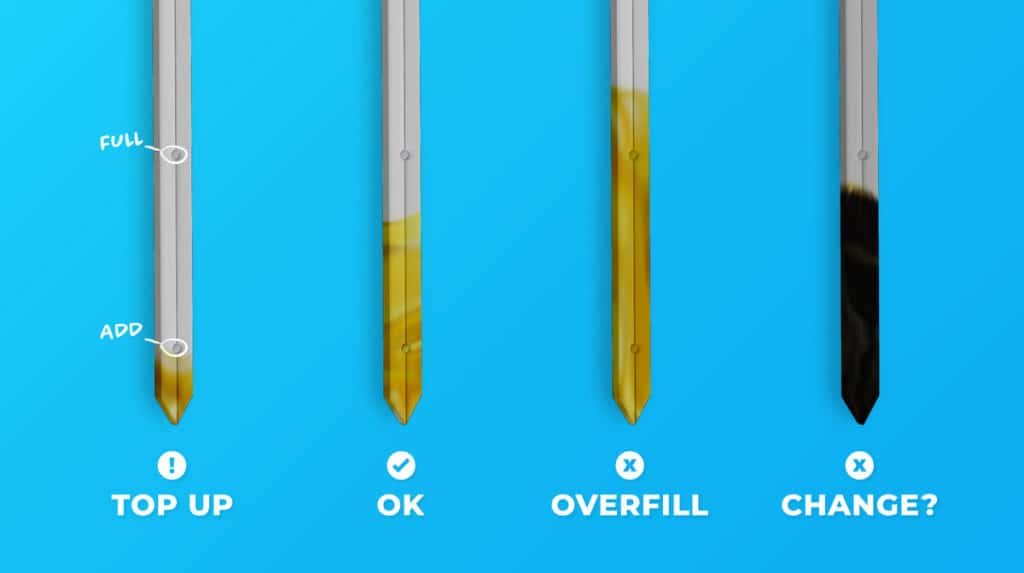
The oil should be a clear, golden, or amber color. If the oil is dark or black, it means the engine is running too hot and needs to be serviced.
Many people believe that oil should be a specific color in order to be effective, but the reality is that there is no one correct answer. The color of your oil can vary depending on a number of factors, such as the type of oil you use and how long it has been in your engine.
However, if you notice that your oil is significantly darker than usual, it may be time to change it. Oil typically darkens as it collects debris and breaks down over time.
As a result, it is important to check your dipstick regularly to ensure that your oil is still within the acceptable range. If you are unsure about what color your oil should be, consult your owner’s manual or speak to a certified mechanic.
What colors can be on the dipstick?
The color of oil can tell you a lot about your car’s health and how well it’s running. If the oil is a healthy color, it means that the engine is properly lubricated and working correctly. However, if the oil is black or dark brown, it could be an indication of engine problems.
The oil that is clear, gold, or amber indicates that it is fresh, clean, and does not need to be changed.
When the oil in your vehicle gets dirty, it will turn black or dark brown. This means that you need to change out what’s been used for more efficient performance with fresh fluid and avoid any future problems!
The dipstick should always be checked for color before getting in the car. If there is no color on the dipstick, it indicates that the oil level is too low and must be recharged.
When the color of the slime on the dipstick is a bit like milk could be a sign of something going wrong with its cooling system.
You might also notice white smoke coming out from under the hood if there is indeed an issue with gaskets leaking or blown joints on major components such as radiators and fans; however, this isn’t always true so you need to have those checked first!
What Color Should Oil Be After an Oil Change?
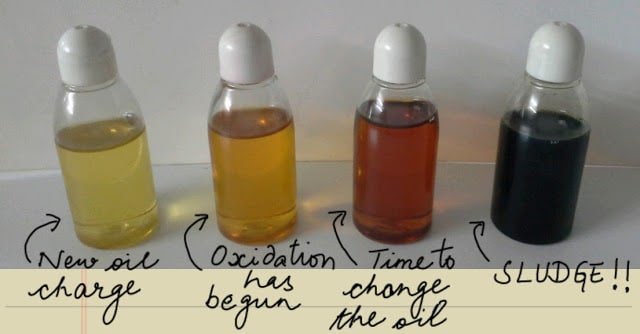
After you’ve changed your oil, the color should be a clear, golden, or amber color.
Consistently checking the color of your oil is important to ensure that your car is running smoothly.
If you notice that the color of your oil is significantly darker than usual, it may be time to change it.
As a general rule of thumb, you should change your oil every 5,000 miles or every six months, whichever comes first. After an oil change, a car should go up to 15000 miles without requiring another oil change.
It’s important to keep an eye on the color of your oil, as it can be an indicator of engine problems. If you notice that your oil is black or dark brown, it may be time to take your car to a mechanic for a checkup.
However, this may vary depending on the type of car you have. Consult your owner’s manual or speak to a certified mechanic to find out what is best for your car.
Useful read: What are some Wrong Oil in Car Symptoms?
Way to measure oil with a dipstick
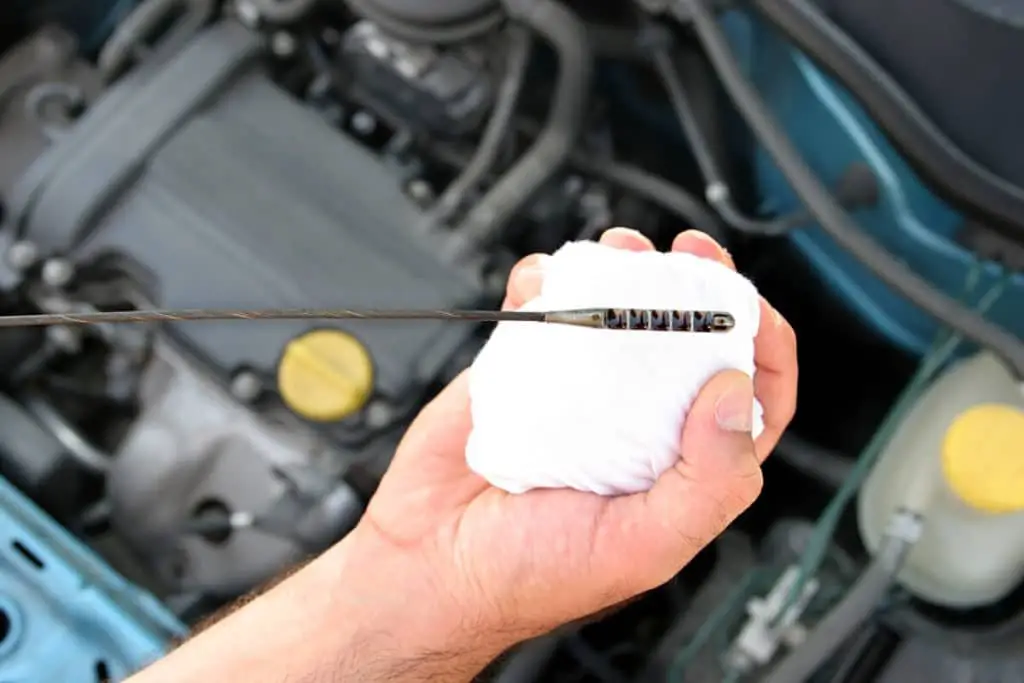
Step 1: Park Your Car on a Level Surface
It’s important to park your car on a level surface before checking the oil. If you check the oil when the car is on an incline, the reading will be inaccurate.
Step 2: Wait for the Engine to Cool
Give the engine time to cool before checking the oil. Checking the oil when the engine is hot can cause burns.
Step 3: Locate the Dipstick
The dipstick is usually located near the front of the engine. Consult your owner’s manual if you can’t find it.
Step 4: Remove the Dipstick and clean it.
To remove the dipstick, pull it out of the engine and wipe it off with a clean rag.
Step 5: Insert the Dipstick
Carefully insert the dipstick back into the engine. Be careful not to touch the ends of the dipstick to anything dirty.
Step 6: Remove the Dipstick Again
Once again, remove the dipstick from the engine and check the oil level. The oil should be between the two marks on the dipstick.
Step 7: Add Oil if Needed
If the oil level is low, add oil to the engine until it reaches the full mark on the dipstick. Do not overfill the engine. If your oil is too much, you should consider removing some. (See Can You Add Oil To A Hot Engine? Or Should You Let It Cool?)
FAQ
Why does my oil look like mud?
When the oil is heated to high temperatures for an extended period, it begins breaking down and combining with dirt.
The molecules combine in a way that attracts other items like fuel or metal particles which are eventually mixed into this gooey sludge-like.
What does the oil look like with a blown head gasket?
When an engine has a blown head gasket, the oil will often appear to be milky in color. This is due to the fact that there is coolant leaking into the oil chambers of the engine, and this mix of oil and coolant can give the oil a milky appearance. If you see milky oil, read our guide on how to fix milky oil in the engine for more information.
If you suspect that your car may have a blown head gasket, it’s important to take it to a mechanic as soon as possible so they can diagnose the problem and make the necessary repairs.
Conclusion
Checking your oil regularly is an important part of keeping your car in good shape and also important to know what color should oil be on dipstick.
When you are checking the oil level in your car, you want to ensure that the color of the oil on the dipstick is within specifications. If you notice that the color of your oil is significantly darker than usual, it may be time to change it.
Pay attention to the time that you should change the oil to keep your car well. However, this may vary depending on the type of car you have. Consult your owner’s manual or speak to a certified mechanic to find out what is best for your car.
This post has hopefully helped you understand what color oil should be on the dipstick and why it is important. Thanks for reading.



